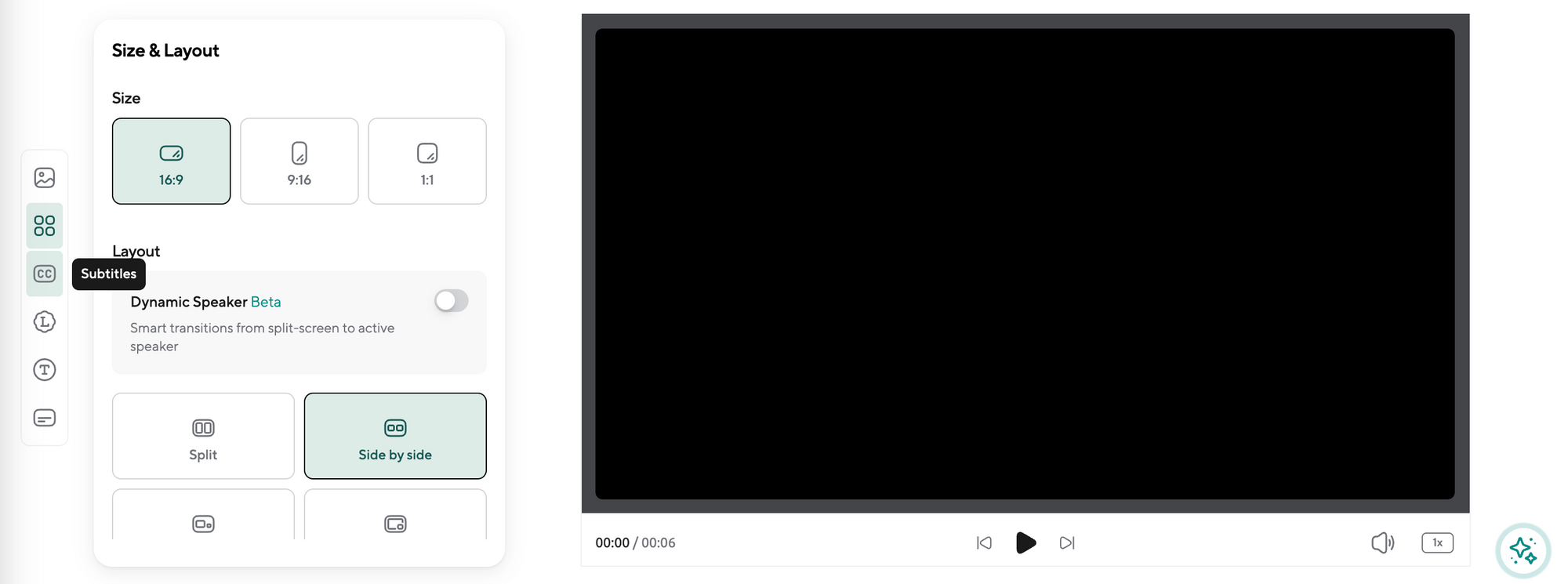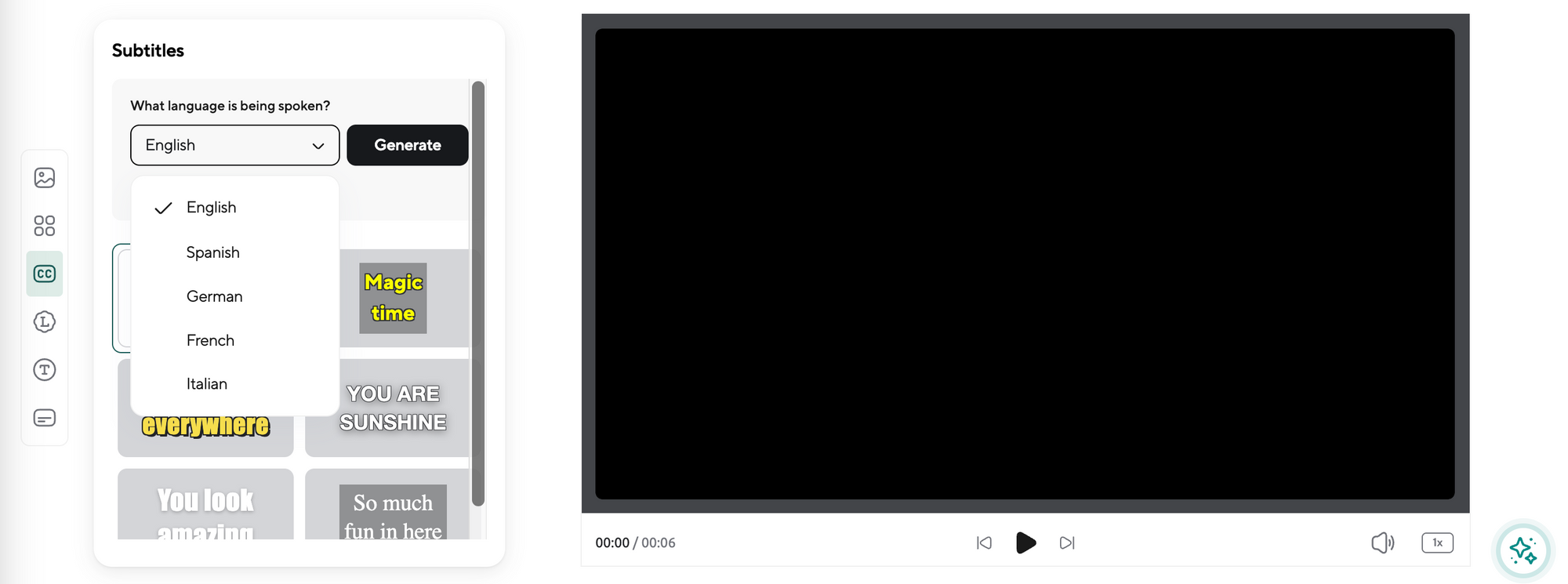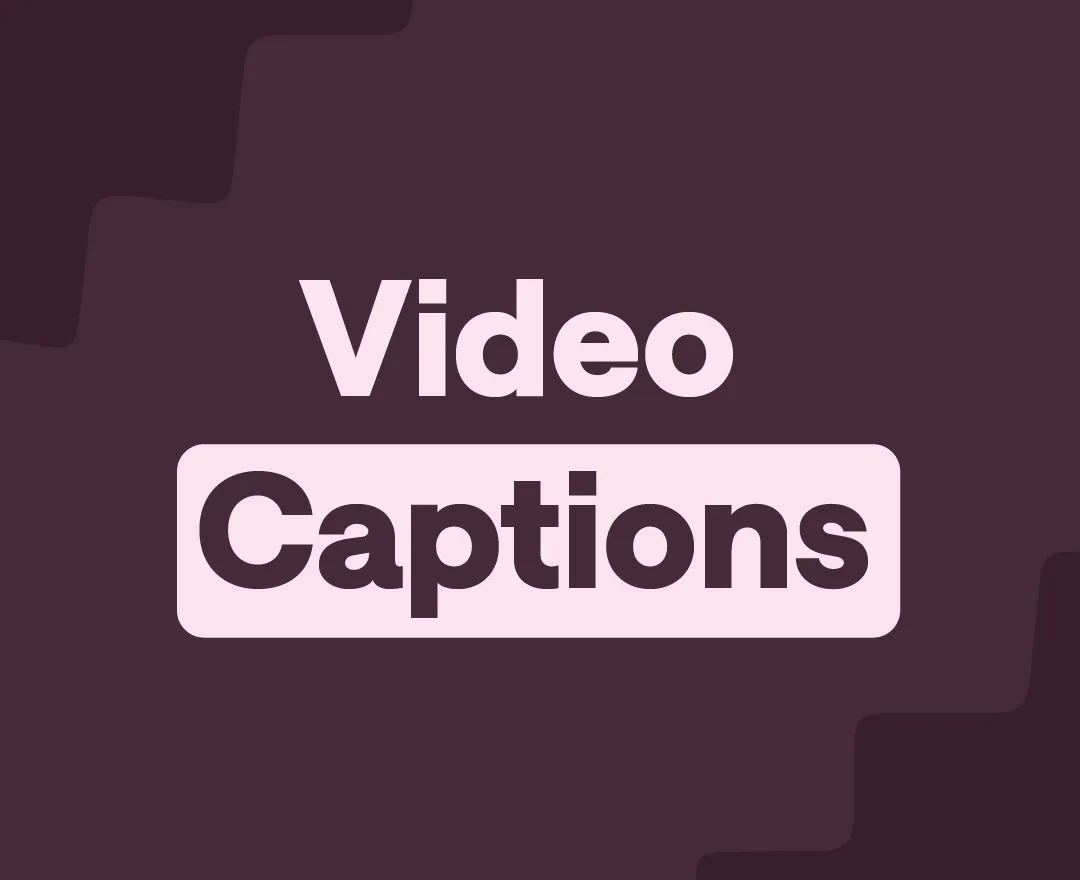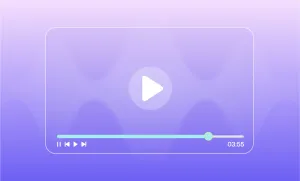It's no secret: everyone loves video, and it's easy to understand why. Visual content is captivating and engaging, but there's one seemingly small detail that can significantly enhance the video viewing experience, and that's captions.
Not including captions in your videos means you're leaving a lot of potential on the table since they can boost your engagement, improve your SEO, and make it super easy to repurpose your content in different formats.
So if you’re not including subtitles or captions to your content then this is your sign to start doing so right away. Especially with AI video subtitle generators, crafting the perfect captions and subtitles has never been easier. In this guide, we’ll tell you all about it.
Table of Contents:
– What is a caption?
– What does closed caption mean?
– Captions vs subtitles
– Here is why you should caption videos
– Caption and subtitle videos with Podcastle
What is a caption?
A caption is essentially the text version of the audio or dialogue in a video. It's usually displayed at the bottom of the screen, synced up with the timing of the speech or sound. Captions are meant to help viewers understand what's being said in the video, even if they can't hear the audio or aren't fluent in the language being spoken.
But captions aren't just a word-for-word transcription. They often include additional information to help convey the full context, like identifying speakers, describing important sounds, or providing explanations for things that may not be obvious from the visuals alone.
So while captions might seem like a small addition, they can make a big difference in making videos more accessible, engaging, and easy to follow for all kinds of viewers.
What does closed caption mean?
Closed captions are a specific type of caption that can be turned on or off by the viewer, depending on their preference. They're called "closed" because they're not permanently embedded in the video itself, but rather transmitted as a separate text file that can be displayed or hidden.
When you turn on closed captions, you'll see the text appear on the screen, usually at the bottom, in sync with the audio. This is different from "open captions," which are always visible and can't be turned off.
Closed captions are really useful because they give viewers control over whether they want to see the captions or not. This is especially handy for people who might need captions in certain situations, like when they're in a noisy environment or trying to watch a video quietly, but don't necessarily want them on all the time.
Most video platforms, like YouTube and Netflix, have options for turning closed captions on or off, and many even let you customize the font, size, and color of the captions to your liking.
Now, a lot of people confuse captions with subtitles, so here is how these two are different.
Captions vs subtitles
Although, at first glance, captions and subtitles feel similar, they serve distinct purposes whenever used for video content:
Using Captions
Captions are usually in the same language as the video's audio and are there to make audio content accessible to people who are deaf or hard of hearing, or anyone watching without sound or in a noisy place. They transcribe the spoken dialogue and also describe non-verbal audio elements like music, sound effects, and different speakers. This way, viewers can follow along with the dialogue and get the full audio experience.
Using Subtitles
Subtitles, on the other hand, are used to translate the dialogue or narration from one language to another. They're mainly used to make content accessible to viewers who don't understand the original language in the video. You'll often see subtitles in foreign films or videos, so viewers can enjoy the content in their native language while still hearing the original audio.
Here is why you should caption videos
1) Your audience will be more engaged
Captions get viewers reading along with your speech, making them more attentive to your content and, hence, more engaged. Moreover, for those of your viewers who are more visual learners, captions are a perfect match, helping them better absorb and remember information.
In longer videos, captions play a crucial role in maintaining viewer interest and reducing drop-off rates by providing a consistent, engaging experience throughout. By keeping viewers focused on the content, captions help ensure that your audience stays with you from start to finish, enhancing their overall experience and increasing the likelihood of them returning for more.
2) You'll publish content that drives organic traffic
Captioning your videos can also improve your search engine optimization (SEO). Search engines can't watch videos, but they can crawl text, so providing captions helps them index your content more effectively. This boosts your video's visibility and ranking in search results, driving more organic traffic to your content.
Key benefits include:
– Improved search engine indexing through text content
– Higher chances of appearing in search results and recommendations
– Increased organic traffic and viewership
– Enhanced keyword optimization opportunities
– Better user experience, resulting in lower bounce rates
– Increased likelihood of social sharing and backlinks
3) More likes, more shares
Captions make your videos more engaging and shareable on social media platforms. Many users scroll through social feeds with the sound off, so captions allow them to understand your message without needing to turn on the audio. This increases the likelihood of likes, shares, and comments on your posts.
4) New ways to repurpose content
Having captions and transcripts simplifies the process of repurposing content from your videos. Instead of manually sifting through hours of footage, you can quickly search for key phrases or specific topics within the text.
This makes it easy to extract quotes for testimonials, create highlight reels, or make summary reports. Transcripts can also serve as the base for developing other materials, such as blog posts, study guides, or detailed analyses, saving you time and effort.
5) Compliance with regulations
Adding captions to your videos ensures compliance with accessibility regulations, like the Americans with Disabilities Act (ADA) in the United States or similar laws in other countries. This helps you avoid potential legal complications and ensure that your content is inclusive to all audiences.
6) Greater accessibility
It's clear that captions make your content much more accessible to a larger audience, but let's take a closer look at some of the groups that will find the biggest benefit from video captions:
– Support for deaf and hard-of-hearing viewers: Captions make your content accessible to those with hearing impairments by including a text representation of spoken dialogue and important sounds.
– Better understanding for non-native speakers: Viewers who are not fluent in the video's language can read along with the captions to better understand the content.
– Flexibility in noisy or quiet environments: Captions allow viewers to follow along in loud public spaces or silent settings without missing any important information.
– Aid for learning disabilities: Those with learning disabilities can benefit from reading captions, which can improve their comprehension and retention of the material.
7) Enhanced learning and educational value
Captions can be a valuable learning tool, especially for informative or educational content. They reinforce and help to highlight the key concepts, allowing viewers to follow along more closely and leading to improved learning outcomes. Whether it's a tutorial, lecture, or training video, captions can enhance the educational value of your content for all viewers.
8) Global reach and audience expansion
Subtitling your videos in multiple languages enables you to extend your reach to diverse audiences across various regions and language demographics. This offers you different ways to engage with viewers who speak languages different from those in your original video, promoting broader global impact and audience expansion.
Oh, and if you’re wondering how to subtitle a video or caption it, all you have to do is find a video-to-subtitle converter that gives you automatic subtitles with just a couple of clicks. We’ll cover it all in more detail in the next section:
Caption and subtitle videos with Podcastle
With Podcastle's video creation suite, you can streamline the subtitling and captioning process effortlessly. Instantly gain access to intuitive recording AND editing software where you can record your video and get automatic captions generated with our AI-powered video subtitle generator.
So if you're eager to create subtitles or captions for free, follow these steps below.
How to create captions
- Launch Podcastle and start a new project.
- Import your video by dragging and dropping it into the project. Podcastle will then automatically extract the audio from your video.
- Right-click on the extracted audio track and choose the "Transcribe" option.
- Once the AI-generated transcription is complete, copy the text.
- Open your preferred video editing software, and paste the copied transcription text onto your original video using the editing tools available in the software.
How to add subtitles
Follow these steps to add subtitles to your video:
1. After completing your video recording through Podcastle, navigate to the Recording tab. Select your video, and then click on Edit Video. This action will launch the Video Editor.

2. Within the Video Editor, locate and click on Subtitles in the toolbar positioned on the left side of the screen.

3. Select the appropriate language and choose a subtitle design that complements the style of your video.

4. Click on Generate. Once the subtitles are successfully integrated into your video, your project is ready for publishing!
FAQs
To finish our blog post on the final note, here are some of the most common caption-related questions we get from video creators:
How to Edit Captions on TikTok?
Unfortunately, editing captions on TikTok after they've been published isn't directly possible. If you spot an error or wish to make changes, you'll need to delete the video and re-upload it with the corrected captions. While it might take a bit of extra effort, ensuring your captions are accurate enhances the viewing experience for your audience.
How to Edit Instagram Captions?
The same goes for Instagram subtitle captions. If your video has already been uploaded with the wrong captions, you can’t really edit the captions using Instagram’s app. You can always just delete the reel and post a new one. Of course, when we talk about Instagram captions, we’re talking about the text embedded in your video. The captions that you write as a description of your posts or reels can always be easily edited.








